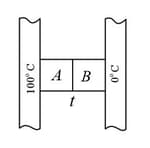The coefficient of thermal conductivity of copper is nine times that of steel. In the composite cylindrical bar shown in the figure, what will be the temperature at the junction of copper and steel?
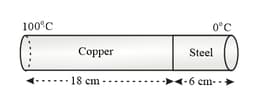


Important Questions on Thermal Properties of Matter
Two identical square rods of different metals are welded end to end as shown in figure (a). Assume that of heat flows through the rods in. Now, the rods are welded as shown in figure (b). The time it would take for to flow through the rods now is,
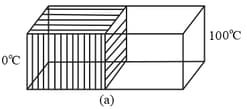
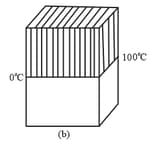
Three rods, made of the same material and having the same cross-section, have been joined as shown in the figure. Each rod is of the same length. The left and the right ends are kept at and , respectively. The temperature of the junction of the three rods will be,
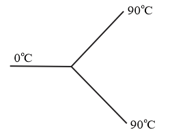
Five rods with same dimensions are arranged as shown in the figure. They have thermal conductivities, and when points and are maintained at different temperatures. No heat flows through the central rod if:
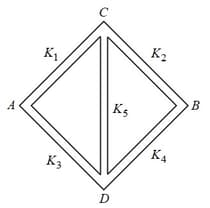
A big box at is connected to an ice cube through identical metal rods as shown in the figure. Ice is melting at the rate of . Rods are rearranged so that they are connected in series between the box and the ice cube. The new rate of melting is . Then is equal to:
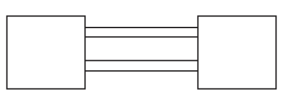
Two metal cubes and of same size are arranged as shown in figure. The extreme ends of the combination are maintained at the indicated temperatures. The arrangement is thermally insulated. The coefficients of thermal conductivity of and are and , respectively. After steady state is reached, the temperature of the interface will be,
